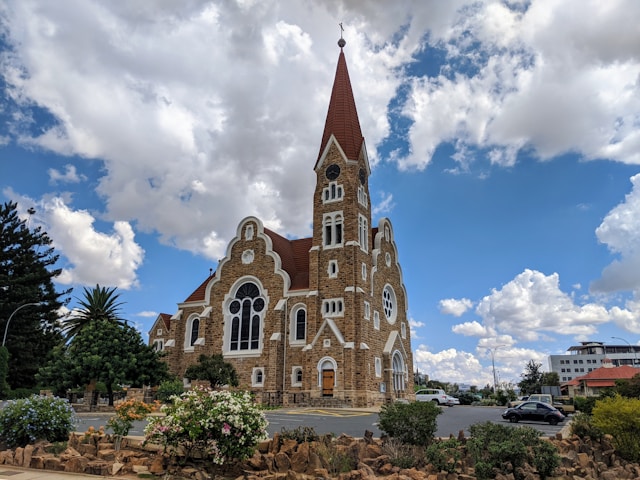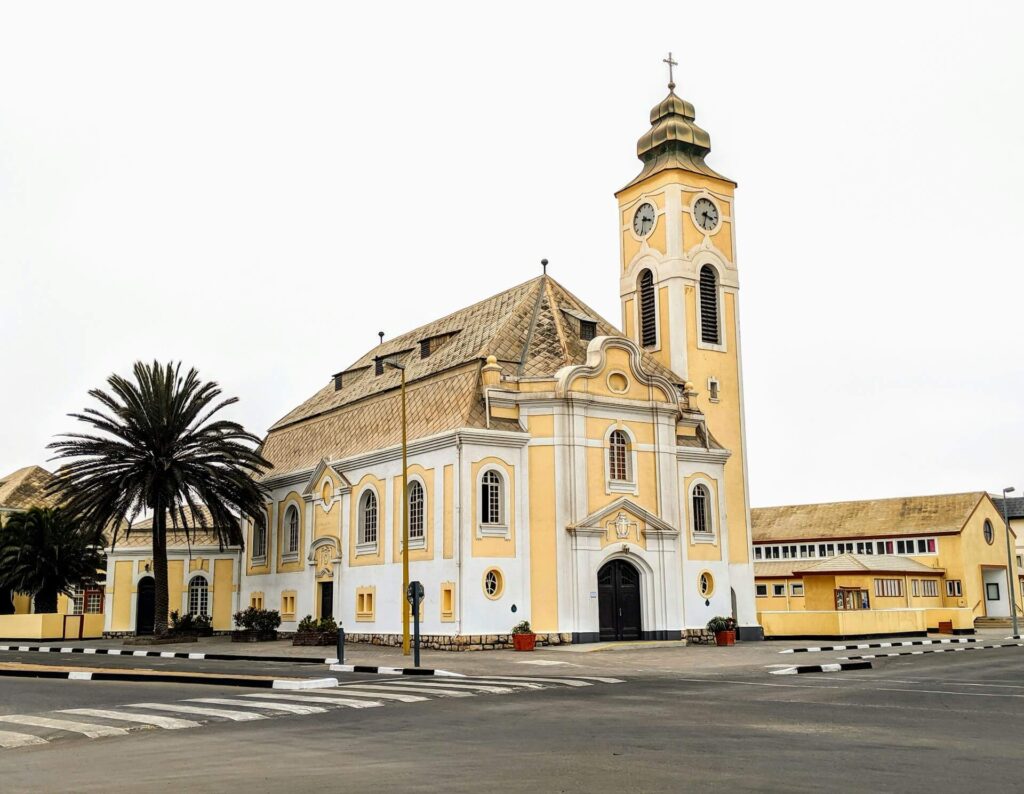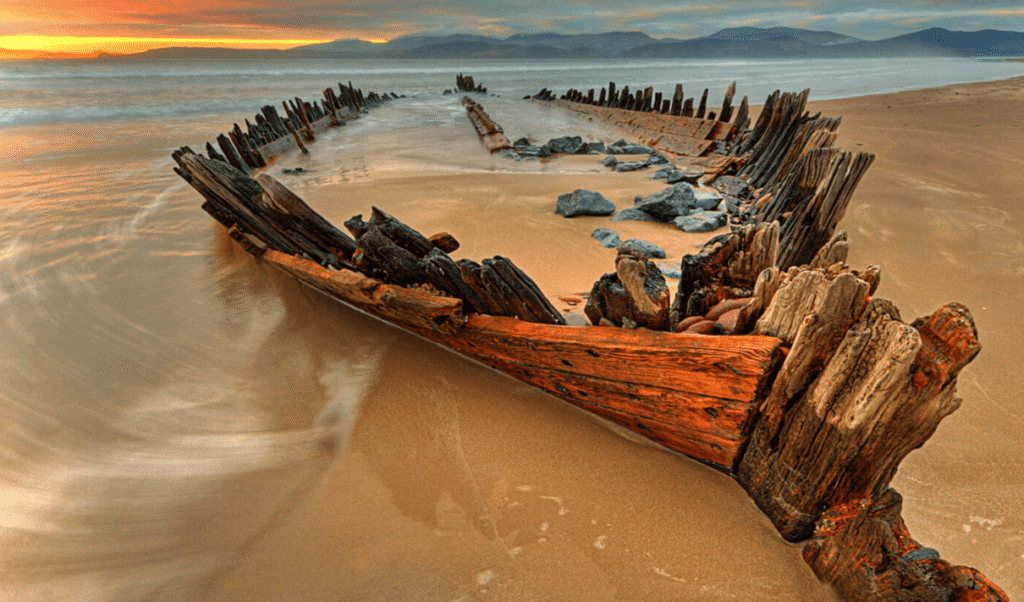Towering red dunes stand out in sharp relief against an astonishingly blue and cloudless sky, while all around you, the silence is palpable. A desert beetle scuttles by to remind you that this seemingly desolate and parched landscape is full of life! Come and experience all the wonders of the oldest desert in the world – come and visit the Namib Desert for the ultimate Namibian adventure.
The Wild Side of the West Coast
The oldest desert in the world is also one of the most breathtakingly beautiful places in Africa to visit and go on Safari. The Namib Desert stretches all along the west coast of Southern Africa for over 2000kms although it is never wider than about 100 km. It runs the full length of the Namibian coastline, and although at first sight it seems devoid of life, the opposite is true, and visitors will be astounded to find that many species of flora and fauna have adapted to the challenging conditions and are thriving here in the desert. The amazing shifting sand dunes stretch right to the edge of the sea, punctuated here and there by mostly dry river canyons and dotted with the skeletons of unfortunate vessels that met their end on the notorious Skeleton Coast.
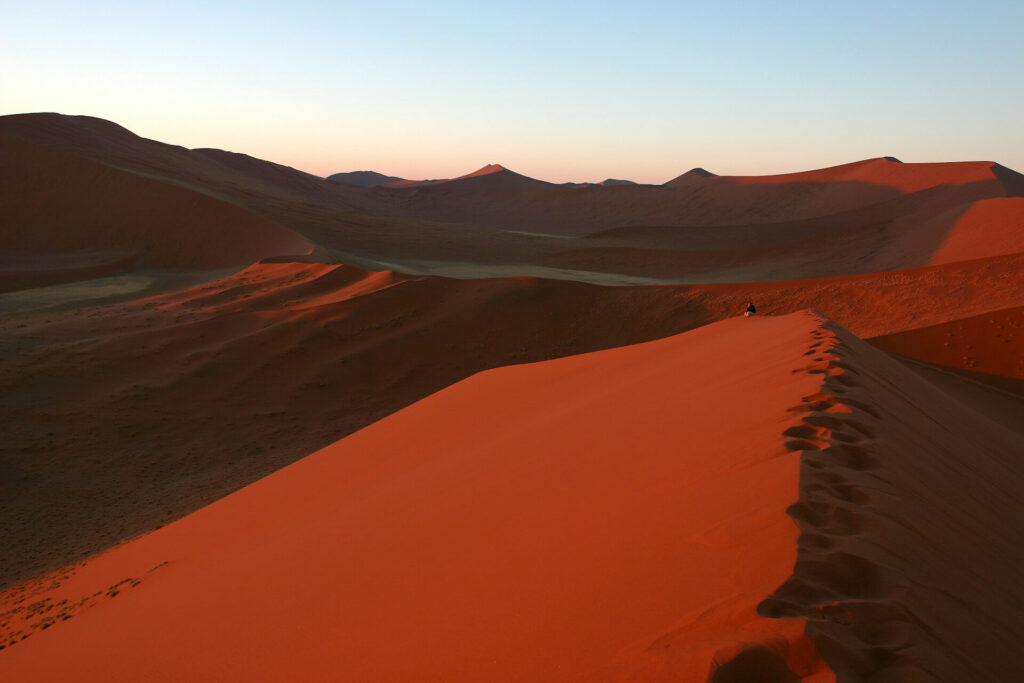
Sossusvlei Dunes, Skeleton Coast, Kolmanskop, and other Highlights
Sossusvlei
The majestic crescent of sand dunes that surround the Sossusvlei (a “vlei” is a saucer-shaped depression that occasionally fills with water after the rains) are among the tallest and most evocative sand dunes in the world -every visitor to Namibia should make a pilgrimage to see them, or better yet, climb to the summit of the tallest one, Big Mama, for the most incredible and exhilarating experience ever! A few kilometres from the dunes is the deep Sesriem Canyon, which occasionally holds water even long after the rains…a lifeline for man and beast alike.
Skelton Coast
The Skeleton Coast is named after the many shipwrecks (as well as bleached sea-animal skeletons abandoned after whaling was abolished here) that litter this inhospitable coastline, a poignant reminder that man is still accountable to Mother Nature. Although the entire Skeleton Coast area is remote and inaccessible, it has a mystique that draws people to it, and you need to experience the magic for yourself to understand. Seen from the air, the entire region is eerily other-worldly; as far as the eye can see, the barren dunes march to the very edge of the land before dropping dramatically into the ocean – an unforgettable sight.
Kolmanskop Ghost Town
In its heyday (around the 1920s), Kolmanskop was a thriving diamond-mining town. The German colonists built beautiful houses, a school, a casino, and many more facilities to make life bearable for the inhabitants of this very remote little town, where diamonds had been found while the railway was being constructed. When a richer diamond field was found further south, Kolmanskop was gradually deserted and reclaimed by the ever-shifting dunes, and it is a very atmospheric place to visit today.
Cape Cross Seal Colony
Visit the largest colony of Cape Fur Seals in the world at Cape Cross. The number of Seals to be found here varies from about 80,000 to over 200,000, depending on the season.
Namib Desert Recreation Area
This part of the desert, just north of the seaside town of Swakopmund, is the place to go for adventure sports. Here you can go skydiving, Hot-air ballooning, Dune bashing and sandboarding, and more! There is something here for all serious adventure sports addicts.
Safaris in the Namib Desert
This remote and inaccessible part of the world is one place where you really need the experts to show you the way! There are many Safaris available in Namibia that include several of the Namib Desert attractions, or you can make up your own list of must-sees and ask your Tour Operator to customise the perfect Safari for you. One of the most stunning excursions you can do is a Flying Safari to the very remote northern wilderness region of the Desert – seeing this exceptional coastline from the air is a once-in-a-lifetime extravagance that you will never forget. If that is beyond your budget, try and organise a short sightseeing flight from Swakopmund to get an aerial perspective of the Desert landscape.
Other Activities in the Namib Desert
Visiting the Namib is an adventure like no other, and there is such a long list of activities that you would need months to enjoy them all! Here are some of the highlights: Ballooning in the Sossusvlei area must be at the top of the list; watching the sun rise over the highest sand dune in the world takes some beating! Another must on your list is an Elephant and Rhino tracking hike along the dry riverbeds of Damaraland, in the northwestern part of the Desert.
A visit to the Walvis Bay Lagoon and the adjacent Salt Pans is great for bird-lovers; here, there is a very large resident population of Flamingos as well as many other marine birds to observe. While you are here, you can go on a catamaran charter or a Dolphin-viewing cruise. Another very worthwhile activity from Swakopmund is the Welwitschia trail, where you will see and learn about this weird and wonderful desert-adapted plant that can live for over a thousand years!
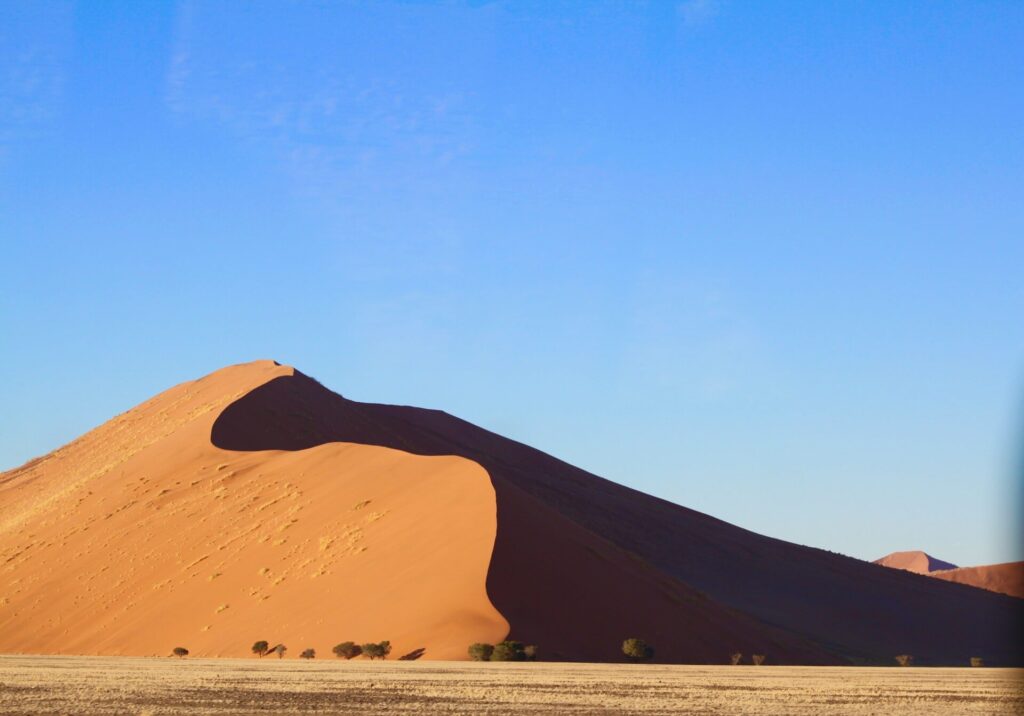
Accommodation in the Namib Desert
Accommodation options vary according to the remoteness of the region. In the Naukluft Park region in the south, where the Sossusvlei is located, there is a wide range of accommodation, including some really luxurious lodges just outside the entrance to the Sesriem Park. Since the Sossusvlei dunes are at their best at sunrise and sunset, aim to spend at least one night in this part of the Desert.
Swakopmund is a pretty seaside town surrounded on three sides by the Desert; here, there is a lot of accommodation to suit all budgets, and the town makes a good base for exploring the central parts of the Desert and the southern portions of the Skeleton Coast National Park. (There is virtually no accommodation inside the park other than the lodges used for the Fly-in safaris and a few very basic fishing camps.) The extreme northern Skeleton Coast Wilderness Region is completely inaccessible except by Fly-in or Flying Safari, and if you choose this option, you will stay at very secluded rustic camps in the most amazingly beautiful locations in the middle of nowhere!
How to Get There
Fly direct to Windhoek from several destinations in Europe and Africa. From Windhoek, there are domestic flights on Air Namibia to Walvis Bay (for Swakopmund). You can also get there by road in 4 -5 hours or, for something really novel, you could take the Desert Express Train from Windhoek to Swakopmund (or vice versa). This special luxury tourist train makes an overnight journey with a couple of stops at a game farm and some sand dunes en route.
Best Time to Visit
The Namib Desert is HOT in summer, and winter (June to September) is definitely the most comfortable time to visit, particularly if you intend to do hiking or game viewing.

